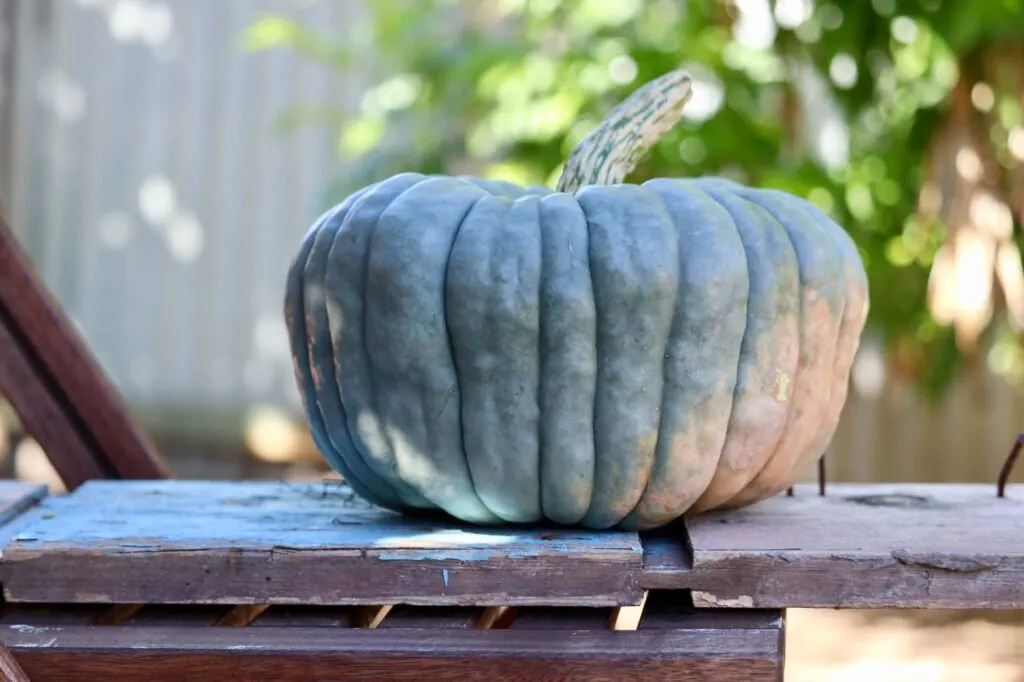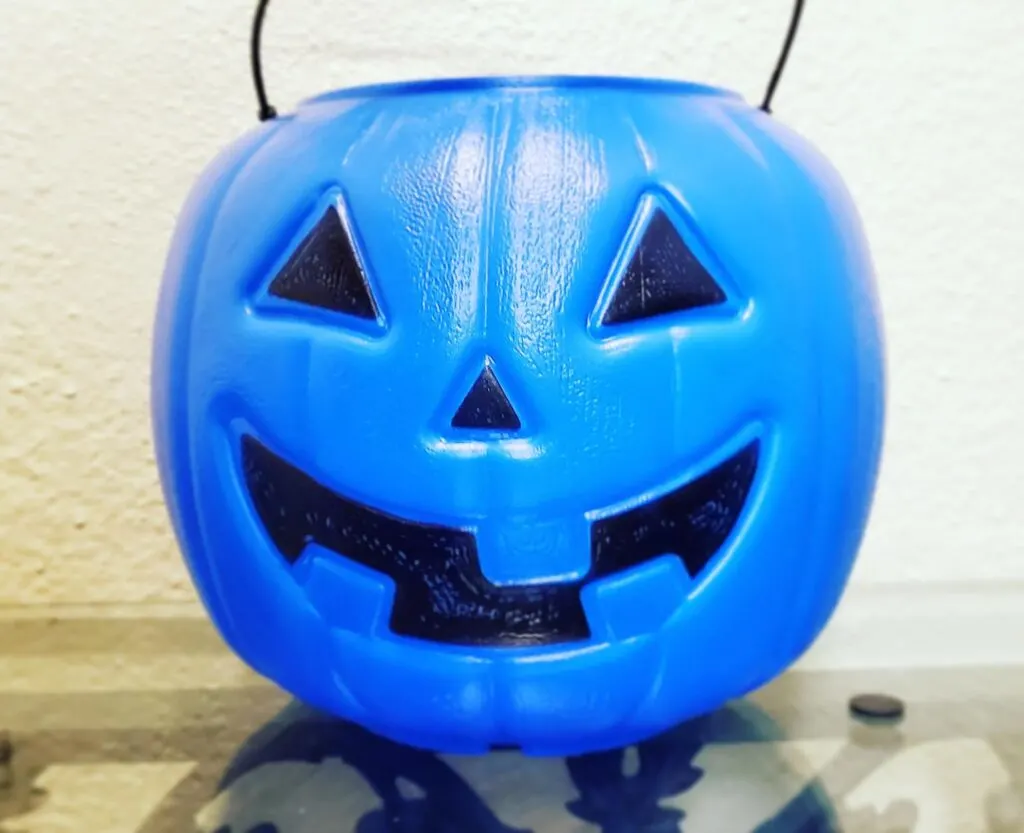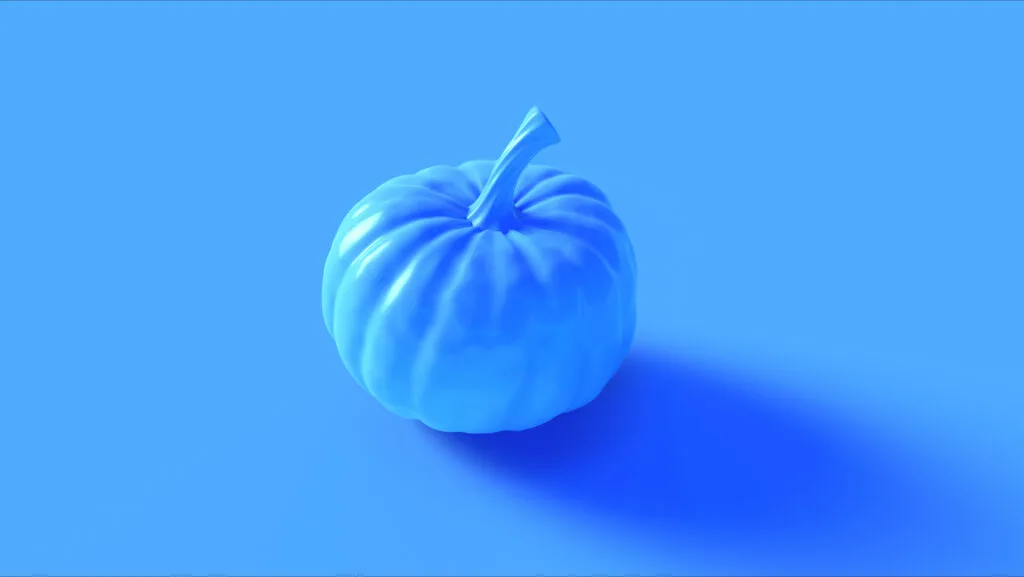Have you heard about the blue pumpkin (or blue bucket)? Here’s everything you need to know!
As a rare color in nature, blue is the most intangible color of all. In fact, it’s one of the most relaxing colors because of its association with the never-ending sky and ocean.
Such a calming color has no connection with Halloween.
But if it isn’t a Halloween color, why are there blue pumpkins?
Everybody knows the tradition at Halloween that a house with a porch light on means homeowners with a generous candy bowl ready to relish the adorable voices of children calling “trick or treat!”
That sounds lovely, but not all children can do that. And that’s ok!
While you can find a number of colored pumpkins, the blue one is used to signal a child who may not be able to speak or express themselves this way. Let’s learn more about it!

What’s the Blue Pumpkin Meaning
Like the teal pumpkin, which signals a house has non-food treats for kids with food allergies, (and purple pumpkin, which raises awareness for people who have been diagnosed with epilepsy AND pink pumpkin, which raises awareness for breast cancer research), the blue pumpkin is used by some parents to spread awareness.
In this case, however, someone might come to your door holding one of these instead of you placing them on your doorstep — but what does a blue pumpkin mean?
It means the person trick-or-treating might have some specific needs, such as autism.
According to the CDC, autism can cause significant social, communication, and behavioral challenges, so the blue pumpkin (or bucket) signals to other people that the child has autism and hopefully will lead to a behavior that doesn’t distress or overwhelm the child.
Only in the United States alone, over 5 million adults have autism spectrum disorder. That’s quite a lot!
How Did the Blue Pumpkin Movement Start
The blue pumpkin went viral on Facebook when a Hawaii mom, Omairis Taylor, shared her experience from a past Halloween.
She said, “my son is three years old and has autism. He is nonverbal.”
“Last year, houses would wait for him to say ‘trick or treat’ in order for him to get a piece of candy, and there I go explaining the situation for the next [five] blocks. This year, we will be trying the blue bucket to signify he has autism,” Taylor wrote in the post.
Her initial post was intended to earn the attention of people from her community, but she received an overwhelming number of supporting messages from parents all over the US.

What’s the Idea Behind the Blue Pumpkin Movement
As said, the idea behind the blue pumpkin is to signal the tricker-treater may have a reason not to speak “trick or treats,” ask something politely, or express gratitude.
It’s about understanding if the children flaps their hands, don’t make eye contact, or make strange noises.
It’s about learning to recognize autism.
Parents who give their children a blue pumpkin or bucket are not looking to label their little ones and have them singled out.
Also, they don’t want to broadcast the diagnosis, but they also don’t want to explain it to anyone. Perhaps the blue pumpkin can avoid uncomfortable conversations altogether.
The whole point is not to give that child, regardless of their age, a hard time, which happens quite often, unfortunately.
Controversy About the Blue Pumpkin (or Bucket)
While many parents find it an excellent way to raise autism awareness, plenty of parents and people on the spectrum do not endorse the idea.
Also, many don’t appreciate the comparison with the teal pumpkin, a project created by Food Allergy Research & Education to raise awareness of food allergens on a night when it can be tricky for kids with food allergies to participate.
(And indicates a house has non-food items, like bouncy balls and vampire fangs.)
In fact, many people believe this practice singles out the child as being different.
On top of that, parents argue their children shouldn’t have to disclose their diagnosis in exchange for a candy bar.

What Can You Do
Whatever your opinion on the subject is, here are a few tips to be inclusive and make this a fun experience for all children, whether they’re wearing their pajamas, costume, no costume, talk, don’t talk, look very young, look a bit old, have a blue pumpkin bucket, have an orange bucket:
- Smile and hand out the candy.
- If you say something and the child doesn’t respond, keep it moving. Never push a child to talk or answer a question. It may be an overwhelming situation for many children.
- If a child (or parent) asks for non-food treats, and you have them, just give them out. Don’t ask questions that might make them feel uncomfortable.
- Celebrate differences every day! We’re all different from one another, and that’s just fine.
Did you enjoy this article about blue pumpkins? Then share it on your social media!
